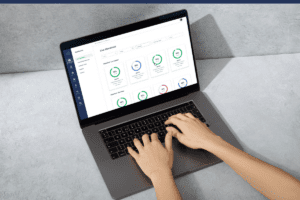Consistent attendance is tied directly to higher grades, GPA, and overall better student success.
Showing up matters. We want our friends and family to show up for the big moments in our lives, like weddings and birthdays. When they do, we strengthen our relationships. We want our colleagues and employees to show up for work. When they do, we move our companies forward. We want the athletes on our favorite sports teams to show up to practice. When they do, they have a better chance of winning their games. In education, we want students to show up to class. When they do, they have a better chance of succeeding academically.
Strong student attendance records are tied to higher grades and higher GPAs. Students who attend class regularly were also more likely to study outside of class and score higher on standardized tests. Time and again, research has validated the importance of student attendance. If attendance is potentially the silver bullet to improving student success, its time to change how we handle attendance.
Attendance at Non-Profit Institutions
Initiative from the administration and instructors is vital, but unfortunately, not all institutions require attendance. Most not-for-profit institutions don’t require attendance, and many don’t even have a school-wide recommended attendance policy. To better understand attendance approaches when there isn’t a requirement for it, we surveyed instructors at San Diego State University. 25% of respondents said attendance was “somewhat” important, while the remaining 75% identified it as “very” important. However, 50% reported not taking attendance. This leaves a curious overlap between knowing student attendance matters but deciding not to track it despite acknowledging its value. Of the 50% who did track attendance, their processes for doing so were divided evenly between technology-enabled methods and traditional paper-based methods.
Attendance at For-Profit Institutions
For-profit institutions, on the other hand, are required to track student attendance. Unlike not-for-profit institutions, for-profit schools receive government subsidies to pay for students and, in return, must meet various criteria to ensure proper delivery of the students’ education. On top of normal requirements for any institution, administrators at for-profit institutions are increasingly taxed. They need to log attendance data tracked manually by instructors, run reports based on daily attendance data, send those results to the appropriate parties, and make sure no errors were made throughout the process. This requires manpower and attention to detail, taking up to four hours of work a day per registrar. Here, technology can help record attendance and provide further data to show satisfactory student progress throughout the term, both key points for a for-profit school.
Technology-based methods for attendance tracking can bring value to both for-profit and not-for-profit institutions. As technology has advanced throughout history, so has the classroom. From chalk-and-slate to overhead projectors to interactive apps, the educational process has been increasingly facilitated by technology. Over the past decade, laptops, smartphones, and tablets have exploded in ownership, and institutions and instructors now have the potential to reach students as individuals at scale instead of solely as a collective or individuals intermittently.
Enter: Technology
Technology-based methods for attendance tracking can bring value to both for-profit and not-for-profit institutions. As technology has advanced throughout history, so has the classroom. From chalk-and-slate to overhead projectors to interactive apps, the educational process has been increasingly facilitated by technology. Over the past decade, laptops, smartphones, and tablets have exploded in ownership, and institutions and instructors now have the potential to reach students as individuals at scale instead of solely as a collective or individuals intermittently.
Putting Technology To The Test
In Fall 2015, CourseKey conducted a semester-long pilot study to test our location-based attendance tracking software to determine what impact tech-enabled attendance tracking had on attendance behavior and the accuracy of the collected data.
Using a T-Test with controlled variables, we examined two undergraduate classes: one with paper-based attendance (the comparison class) and one with technology-enabled attendance (the treated class). For both classes, classroom monitors counted the number of students present was counted and compared the results to the attendance data collected through the traditional paper-based method and the data collected through CourseKey’s software. At the end of the term, 22 class sessions had complete data for analysis.
Attendance was 6% higher on average in the treated class than in the comparison class. 77% of students enrolled in the treated class attended weekly, compared to only 71% of students in the comparison class. While overall attendance decreased throughout the term, there was a greater fall-off in the comparison class, relative to the treated class using CourseKey.
During the first half of the term, an average of 82% of treated students attended class, versus 77% of comparison students. During the second half of the semester, those percentages dropped to 72% of treated students (10% decrease), versus 64% for comparison students (13% decrease).
In addition to higher attendance rates, the treated class also resulted in higher attendance data accuracy. In the comparison class, every session showed inflated attendance data, with students signing in for absent classmates. On average, two students were absent each class session but listed as present on the sign-in sheet. The treated class used CourseKey’s location-based attendance tracking and resulted in more accurate, reliable data when compared to the visual count by class monitors.
In Conclusion: High Attendance Connects to Student Success
For years, research has shown that attendance matters. This isn’t news. Students who come to class generally perform better both in and out of class.
At CourseKey, we’re personally excited by the results of our research and the recent explosion of device ownership. Our study showed higher attendance rates with higher accuracy when students checked in for class using technology. Additionally, institutions and administrative staff can benefit from more efficient processes, more accurate data, and more time freed up to spend on other tasks that get pushed aside to manage paper attendance records.
If we all agree that showing up matters, we say why not use technology to encourage and track it?
Recent Articles


















